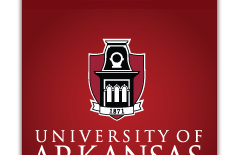Keywords
dairy production, price gap, consolidation, farmer cooperatives, dairy sector
Document Type
Article
Abstract
Milk in Pakistan is infused with the self-understanding of a nation. British colonial administrators laid the modern-day foundations of the country’s structure through land grants to small farmers. In an agricultural country where nearly forty percent of the population remains food insecure, rearing animals is a way of life in the rural areas where milk remains an important source of animal protein. Selling the daily surplus that families don’t consume is a significant source of earnings for cash poor families – and here an unprecedented change is taking place within dairy management and milk procurement systems. The scale of this change is significant as is its ability to connect even the smallest of dairy farmers to the milk buying habits, shaped by sophisticated marketing campaigns, of middle-class buyers in the country’s burgeoning cities. The significant changes underway are the result of the actions of large multinational and national companies - including the entry of the commercial arm of the military in the commercialization of the milk value chain - paying cash to small farmers. These operations, which may at first seem symbiotic, in connecting rural sellers to urban buyers, are in fact placing significant pressures on farmers to increase the size of their holdings as well as to improve their breeding stock by moving towards improved (meaning imported) higher yielding cattle varieties. While national and provincial governments with the support of international development partners promote the dairy sector as contributing to rural, economic and national development, I argue that a strategy driven by efficiency will ultimately lead to the demise of those very same small livestock and agricultural farmers it aims to uplift. This is because the logic of commercializing the milk value chain through the operations of large Milk Procurement and Marketing Companies (MPMC’s) and the pressures to increase milk yields and herd sizes requires consolidation and financing – options that are mostly available to richer and larger farmers. Is modernized milk collection already moving beyond its reliance on collecting milk from dispersed small farms? The unfolding pressures carry with them the effects of increasing demand for all inputs, including consolidated land, water and feed operations which in turn have significant implications for small farmers, animals and the environment. With small farmers reliant on the income from the sale of milk that ties them to a system that may come to no longer need them, can we foretell the demise of small farms? I suggest that these insights are particularly relevant for the study of rural, economic, social, national and international development.
Recommended Citation
Sattar, E. (2021). Can Small Farmers Survive?: Problems of Commercializing the Milk Value Chain in Pakistan. Journal of Food Law & Policy, 16(2). Retrieved from https://scholarworks.uark.edu/jflp/vol16/iss2/7
Included in
Agricultural Economics Commons, Agriculture Law Commons, Food and Drug Law Commons, Food Studies Commons

